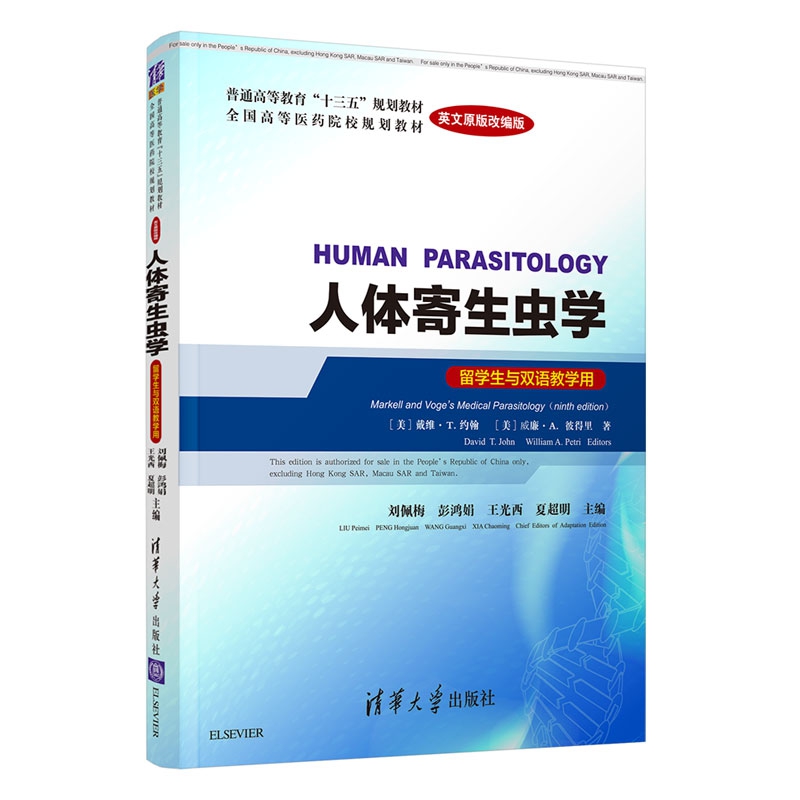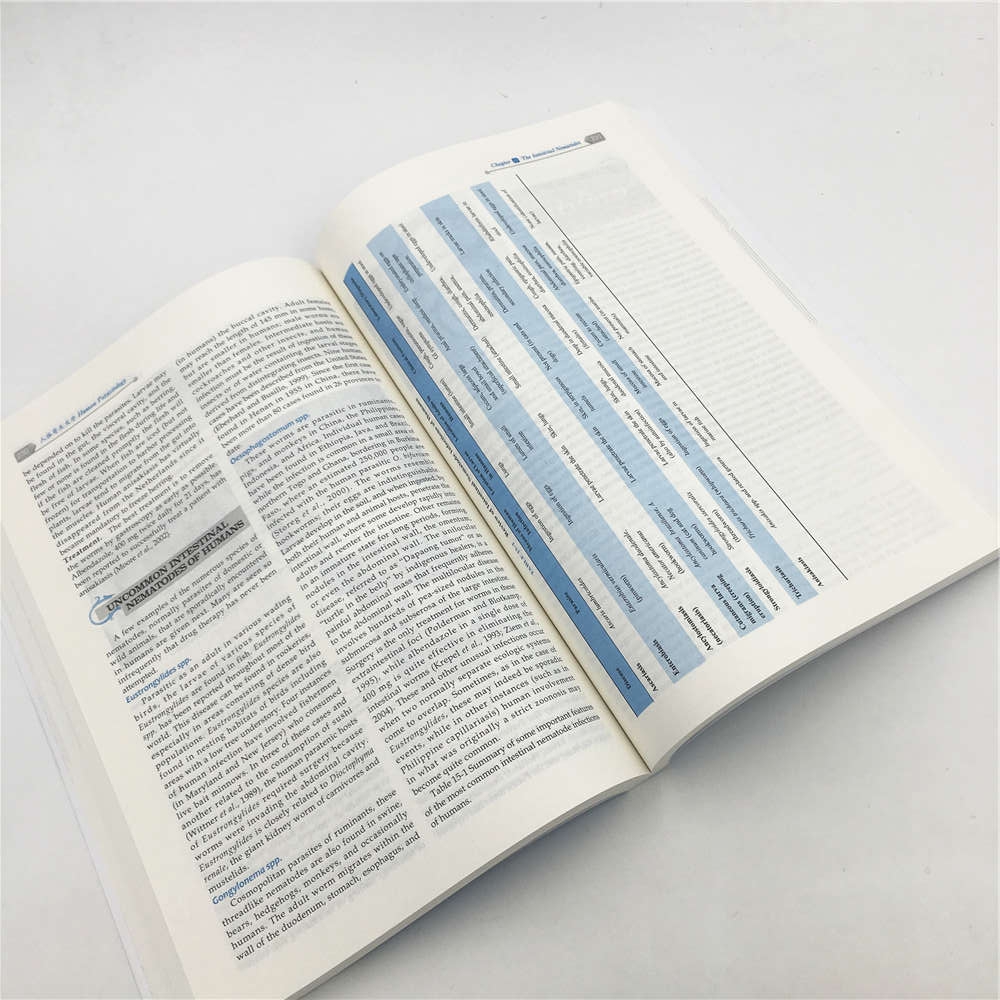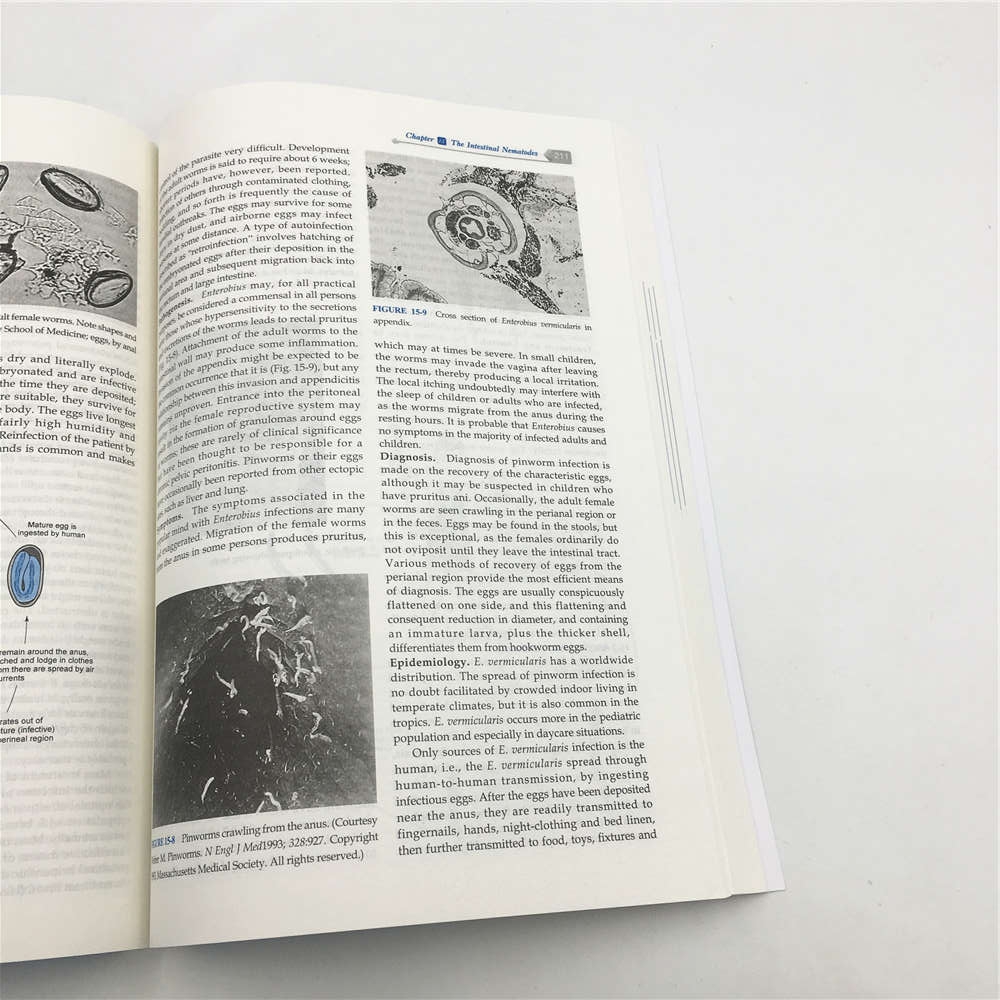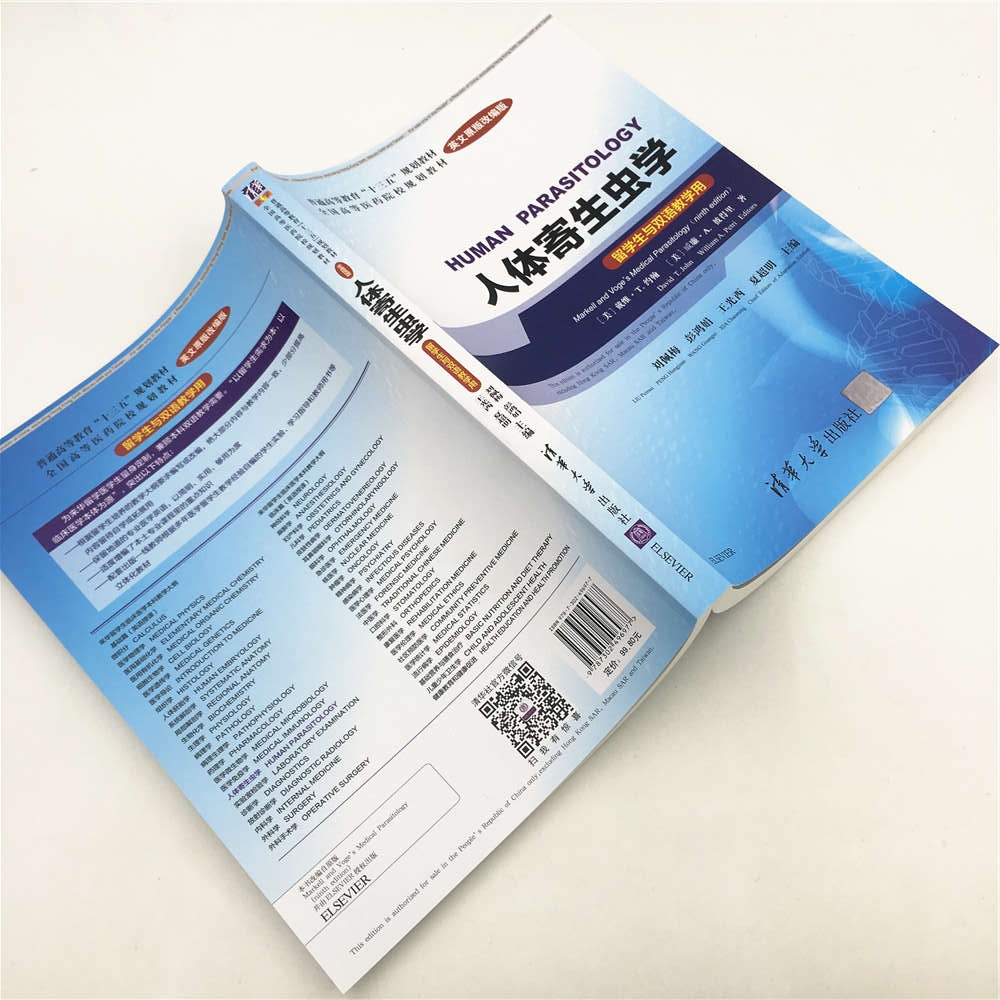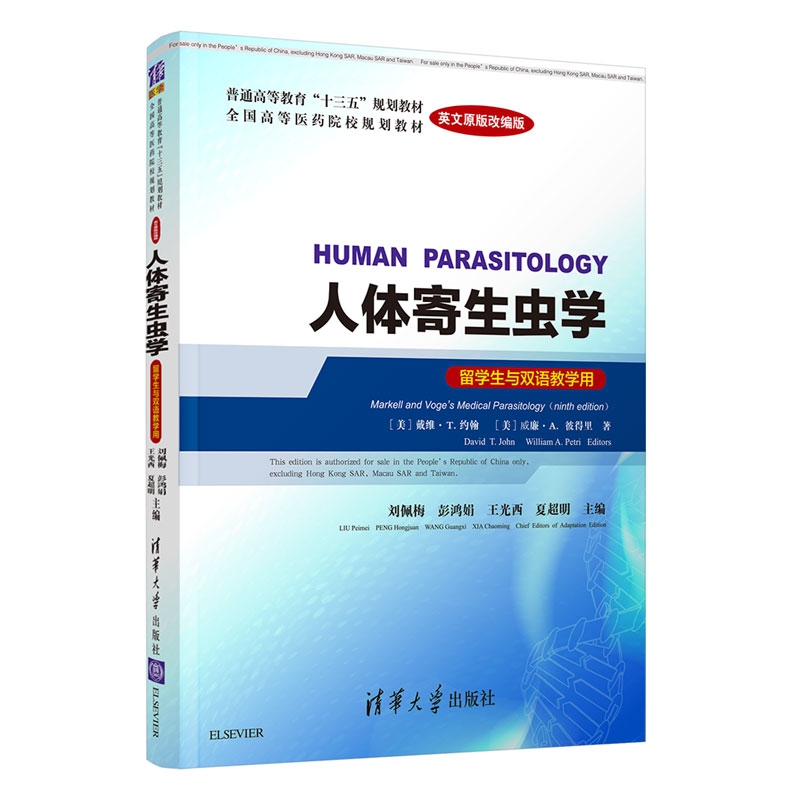
出版社: 清华大学
原售价: 99.80
折扣价: 77.90
折扣购买: 人体寄生虫学(留学生与双语教学用英文原版改编版全国高等医药院校规划教材)(英文版)
ISBN: 9787302496977

"刘佩梅,女,从事人体寄生虫学教学(临*五年制、七年制、留学生及相关专业本科)27年,从事教学管理10年。主持天津市教改项目2项,主持高等医学教育学会教改项目1项。参加***课题1项,教委3项。主编教材3部,副主编6部,其中1部副主编卫生部***十一五规划教材,全国高等学校8年制人体寄生虫学教材(第二版)(詹希美主编)2009年。 2009年获***教学成果一等奖(第四),2009年获天津市教学成果一等奖(第三)。获校级教改成果一等奖二项(**)、二等奖两项(**)。天津市高教研究会教学成果三等奖(第四)。发表教学论文20余篇,2006年获高校教学改革**论文二等奖(**) 在天津市第五届青年教师基本功竞赛中获一等奖。指导大学生科技小组完成的论文在全国第六届“挑 战杯”大学生课外学术科技作品竞赛中荣获三等奖,同年两篇论文获天津市三等奖。 "
PROTOZOOLOGY Chapter 3 Introduction to Protozoa Protozoa are unicellular eukaryotic organi**s that do not undergo tissue formation through the process of embryological layering, including about 65,000 species. Most of them are free-living and some are parasitic in human or other animals. Medical protozoa refer to the protozoa that are parasitic in the lumen, body fluid, tissue or intracellular of the human. There are approximately 40 species, which can be classified into pathogenic protozoa and non-pathogenic protozoa. The size of protozoa is 2-200 μm. All of them h**e the usual cellular structure, including the pla**alemma, the cytopla** and the nucleus and can complete all the functions of life activities. The body is bounded by pla**alemma and may possess a **ycoprotein surface coat. There exist complicated receptors, ligands, enzymes, and other kinds of antigen components on the pla**alemma, so pla**alemma involves a serial of activities including invasion, excretion, intaking of nutrients, mobility, and evasion of host immunity and so on. Usually, there are three ways for intaking nutrients: permeation, pinocytosis, and phagocytosis. The cytopla** of protozoa is composed with the substrate, organelle, and some special vacuoles. Locomotory organelles are unique to protozoa, and the flagellum, cilium, pseudopodium and sucking disk are their unique locomotory organelles. The protozoa can be classified into amoeba, flagellate, ciliate and sporozoa based on the types of locomotory organelles. The Nuclei of protozoa may be of two types: vesicular nucleus and compact nucleus. Most species of the protozoa are of vesicular nucleus. Reproduction in protozoa includes either asexual production or sexual production, or both asexual and sexual. The most common type of asexual multiplication is binary fission which split the individual into two, and other types including multiple fission and budding. The sexual reproduction involves gametogony and conjugation. The reproduction can be an alternation of generation in some protozoa, such as in Pla**odium and Toxopla**a gondii. Nevertheless, the sexual reproduction only can happen in definitive host. The felines are the definitive host for Toxopla**a gondii, and the gametogony for Pla**odium happens in the mosquitoes. The life cycle of protozoa consists of several developmental stages differing in structure and activity: trophozoites, cyst formation, and sexual phase. The reproduction and feeding stages and trophozoites are active and associated with the pathogenesis of human diseases. The cysts are major infective sources with a protective membrane or wall which ena**e the parasite to persist and “wait” for tran**ission to a new host. The cyst formation happens when the protozoa are in the unf**ora**e circumstances. According to the tran**ission characteristics, the transfer can be classified into three modes: person to person transfer mode in which no intermediate host is needed and the tran**ission is only from person to person, circulation transfer mode in which protozoa passes through more than one vertebrate with sexual and asexual reproduction to finish its life cycle, and vector transfer mode in which the protozoa need insects as host to develop to an infective stage. The pathogenesis of protozoa is associated with species/strains, location, virulence and proliferation of the protozoa and the state of the host immunity. There are three typical characteristics of pathogenesis including multiplication, diffusion and invasion, and opportunistic pathogen. Opportunistic protozoa are somewhat symbiotic and no**athogenic, causing only limited clinical symptoms in immunocompetent host called suppressed infection, but severe symptoms may appear in the immunodeficient persons. For example, there are no clinical symptoms in immunocompetent after infected with Toxopla**a gondii. However, there can be serious Toxopla**a encephalitis in persons with AIDS. There are four phyla for medical protozoa: Phylum Sarcomastigophora, Phylum Apicomplexa, Phylum Microsporidia and Phylum Ciliophora. A number of protozoan pathogens are human parasites, causing diseases such as amoebic dysentery (by E. histolytica), trichomoniasis (by Trichomonas vaginalis), giardiasis (by Giardia intestinalis), kala-azar (by Leishmania donovani), malaria (by Pla**odium falciparum), toxopla**osis (by Toxopla**a gondii), cryptosporidiosis (by Cryptosporidium), etc. (PENG Hongjuan) 《人体寄生虫学(Human Parasitology)》可作为医学院校留学生临*医学专业本科学生的人体寄生虫学基础课教材,同时也是医学院校各专业研究生、教师及临*医师、药师获得这方面系统知识的一本有益读物。
